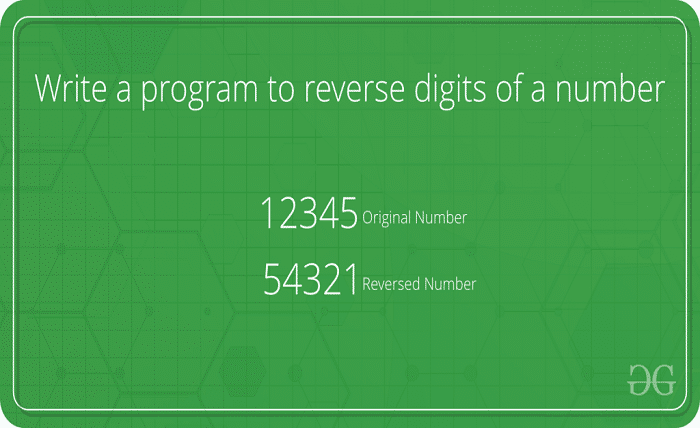Introduction
The concept of a reverse number is a simple yet intriguing aspect of mathematics. By reversing the digits of a number, we uncover new patterns and applications that are not only mathematically significant but also culturally interesting. This blog post delves into the definition, calculation methods, and various uses of reverse numbers.
Definition of Reverse Number
A reverse number is obtained by reversing the order of digits in a given number. For example, the reverse number of 123 is 321. This process is straightforward but opens the door to numerous mathematical curiosities and practical applications. Understanding the definition of reverse numbers lays the foundation for exploring their broader implications.
Mathematical Significance of Reverse Numbers
Reverse numbers play a crucial role in various mathematical theories and problems. They are often used in number theory to identify palindromic numbers—those that read the same forwards and backwards. The study of reverse numbers also aids in understanding numerical symmetry and properties of digit manipulation.
How to Calculate a Reverse Number
Calculating a reverse number is a simple process. Start by taking the original number and separating its digits. Then, rearrange the digits in reverse order. For instance, to reverse the number 456, you separate it into 4, 5, and 6, then arrange them as 654. This method can be applied manually or programmatically using various algorithms.
Algorithms for Reversing Numbers
Several algorithms can be used to reverse numbers, especially in programming. A common method involves converting the number to a string, reversing the string, and then converting it back to an integer. Another approach uses mathematical operations to extract and rearrange digits. These algorithms are fundamental in computer science and digital processing.
Practical Applications of Reverse Numbers
Reverse numbers are not just a theoretical concept; they have practical applications in various fields. In cryptography, reversing numbers can be part of encryption and decryption processes. In digital signal processing, reverse numbers help in the transformation and analysis of signals. Additionally, they are used in coding algorithms to optimize data manipulation.
Reverse Numbers in Cryptography
In cryptography, reverse numbers play a role in certain encryption techniques. By reversing digits, cryptographic algorithms can create more complex and secure keys. This process adds an extra layer of difficulty for potential attackers, enhancing the security of encrypted data.
Reverse Numbers in Digital Signal Processing
Digital signal processing (DSP) often utilizes reverse numbers in transforming and analyzing signals. By reversing the sequence of data points, engineers can apply specific filters and transformations more effectively. This technique is essential in fields like telecommunications, audio processing, and image analysis.
Cultural and Historical Significance of Reverse Numbers
The fascination with reverse numbers extends beyond mathematics and technology. Many cultures and historical texts feature reverse numbers in various forms, from palindromic dates to symbolic meanings in numerology. Understanding the cultural context of reverse numbers provides a richer appreciation of their significance.
Reverse Numbers in Puzzles and Games
Reverse numbers are commonly used in puzzles and games. Many brain teasers and mathematical puzzles involve reversing numbers to achieve a goal or solve a problem. These activities not only entertain but also sharpen mathematical skills and logical thinking.
Challenges in Working with Reverse Numbers
Despite their simplicity, reverse numbers can present challenges, especially with large numbers or complex algorithms. Issues such as handling leading zeros and ensuring computational efficiency are common. Addressing these challenges requires careful planning and understanding of numerical properties.
Future Research and Innovations with Reverse Numbers
Research into reverse numbers continues to evolve, with new applications and theoretical insights emerging. Innovations in computer science, cryptography, and digital processing are expanding the uses of reverse numbers. Future research may uncover even more fascinating aspects of this simple yet profound concept.
Conclusion
Reverse numbers are a captivating aspect of mathematics with wide-ranging applications in cryptography, digital signal processing, and beyond. By understanding how to calculate and utilize reverse numbers, we gain insights into numerical patterns, enhance security protocols, and improve data processing techniques. Whether explored for theoretical interest or practical use, reverse numbers offer a wealth of knowledge and potential innovations.
FAQs
1. What is a reverse number?
A reverse number is created by reversing the order of digits in a given number. For example, the reverse number of 123 is 321.
2. How can reverse numbers be calculated?
Reverse numbers can be calculated by separating the digits of the original number and rearranging them in reverse order. This can be done manually or through algorithms.
3. What are the practical applications of reverse numbers?
Reverse numbers are used in cryptography, digital signal processing, coding algorithms, and various mathematical puzzles and games.
4. Why are reverse numbers important in cryptography?
In cryptography, reversing numbers can enhance the complexity and security of encryption keys, making it harder for attackers to decipher encrypted data.
5. How do reverse numbers relate to palindromic numbers?
A palindromic number reads the same forwards and backwards. Reverse numbers help in identifying and studying these special types of numbers in number theory.
